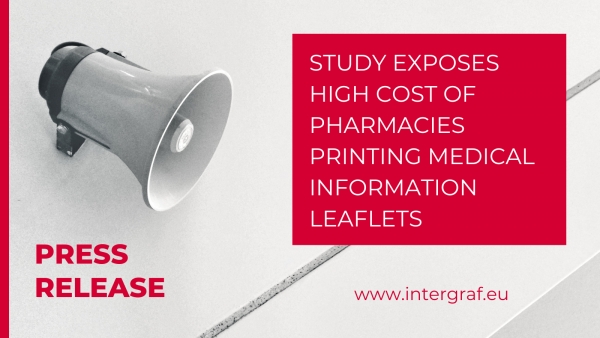4 August 2020

Plug-and-play-printing
We all understand the concept of plugging one device into another and it just ‘works'. But, as a printer, how would you feel about being able to ‘plug in' to a readily available stream of print work?
More and more buyers of print are turning to the convenience of a printing portal to source and procure print. The online printing sector - rampant until the pandemic struck - was perhaps, more than any other, taking advantage of the print consumers desire to buy products quickly and easily over the internet.
The problem (let's call it a ‘limitation') with the online printing sector is that it comprises either of individual companies who have placed an e-commerce front-end on to its business; or small conglomerates of suppliers who are working together through a central reseller. This works well enough, but is limiting in two ways:
- The range of products is generally restricted to common sizes, common specifications, common colours, common stocks and common quantities.
- The methodology for printing is usually ‘job ganging', which creates limitations as to how a job can be packed and delivered and also suffers from the perception of security and confidentiality risks due to job sharing.
There is also the matter of price. SKU-based pricing is most often used by online suppliers for each quantity, size, specification, colour and stock combination. This can lead to enormous price matrices which can become unwieldy to manage and maintain. One well known online printer is known to use in excess of one billion prices to populate its product catalogue online!
Limitations aside, in a post-Covid era, the growth of online printing platforms to accommodate the demand for easy access to printed materials seems certain. So where does a ‘traditional printer' fit it?
Until fairly recently, it was not clear how a traditional printer - one that doesn't job gang and has no online front end to its business - would fit into the future of print. Die-hard traditionalists would argue that there will always be a place for the tactile, added value approach to print; and that clients will still want to buy print in the traditional way, come what may. Whilst this may be true, the world is rapidly changing in a digitally dominated marketplace. This can lead to the quick demise of a business if it doesn't keep up with consumer trends and evolving buying habits for its products and services.
This brings us on to the concept of plug-and-play-printing.
With the evolution of print trading platforms like Haybrooke Associates ‘PDQ Sales Hub', it is now possible for a traditional printer to play the online selling game and preserve the more traditional aspects of its approach to business.
Printers wishing to participate simply need to fill in a basic inventory of its machinery and services and then populate these with some basic data to get started; information such as the machine's peak performance and the cost rates associated with each colour combination. Then, within a couple of hours of data input, the printer is effectively ‘plugged in' to the system and ready to begin.
Once plugged in, the system will provide an automatic price for the printer for associated customers in the system. With Haybrooke's PDQ solution, at least, this is not a one-shoe-fits-all approach. Buyers and printers either know each other beforehand or are introduced to each other via the system. Then, once a relationship has been established, the automation really begins.
Once connected to a client, PDQ takes care of all of the quoting requirements for the printer. This can mean hundreds - and sometimes thousands - of quotes per day that the printer does not have to spend time producing. And, with the sheer volume of quotes pouring through PDQ, even a small positive hit rate for a printer can result in a large number of new jobs that are ideal for its kit that it would otherwise miss out on; without exerting any effort in order to win it.
The integration possibilities do not end there. Because PDQ is built upon an open API architecture, printers can pull data straight off the system and into its MIS. One such printer is ESP Colour based in Swindon. Managing Director, Nick Lee: "It's like having a robotic estimator that works 24 hours a day, 7 days a week. Once the order is placed, ESP is able to import the data into our MIS, collect the artwork and provide live feedback back to PDQ which, in turn, keeps the customer fully up to date. The whole system works seamlessly. PDQ allows us to provide our best service to customers and, simultaneously, gives them comfort that they are buying printed products at the best commercial rates across their supplier base."
It is the latter part of Lee's flattering statement that may concern some printers plugging in to the system. Are portals like PDQ simply there to drive down the price for its customers?
This is a complex question as there are genuine plusses and minuses to being part of a fully automated pricing and procurement workflow. On the plus side, there is a readily accessible stream of work that printers can simply plug into; when they need it. On the downside, the pricing will be naturally keen in these types of environments. Despite this, there are no sales costs and reduced admin costs (estimating being the obvious example); plus a job can be pushed directly into a printers workflow reducing human touch points - and costs - down to the bare minimum.
In a post-Covid era it is likely that more consumers of print than ever will want to access the printing industry with hands-off automation, such as is provided in PDQ. This might mean that, in the near future, printers have no choice but to plug-in to centralised purchasing systems to get volumes of work; even if it maintains a more traditional approach with a reduced number of its customers.
Whatever printers feel about printing portals like PDQ, they look like they are here to stay and are growing in popularity. For, not only do they challenge the perception of traditional printing, but they even represent a challenge to the newest kid on the block itself; online printing. No longer will a printer have to think about creating its own online portal; or creating and maintaining mammoth prices lists for the purpose; or job ganged production; or constructing its own API. It can simply plug into a portal like PDQ and begin to play in the print marketplace almost immediately.
It was perhaps both inevitable and unavoidable as an evolution of print that portals like PDQ would eventually become ubiquitous in the industry. It's a future in which printers who play the game better than others may become the ultimate online winners.
To discuss further please email John Roche at [email protected]
 Intergraf Economic News (Paper Prices) - March 2024
Intergraf Economic News (Paper Prices) - March 2024
18 March 2024
Access the latest edition of the Economic Newsletter for the European Printing Industry for data on paper consumption, and pricing data for pulp, paper and recovered paper. Data for packaging papers and board is also available with this edition.
 STUDY EXPOSES HIGH COST OF PHARMACIES PRINTING MEDICAL INFORMATION LEAFLETS
STUDY EXPOSES HIGH COST OF PHARMACIES PRINTING MEDICAL INFORMATION LEAFLETS
7 March 2024
Intergraf welcomes the release of a study by our partner MLPS (Medical Leaflet = Patient Safety), a subgroup of the European Carton Manufacturers Association (ECMA) shedding light on the potential economic costs associated with the proposed use of Print on Demand (PoD) leaflets in the pharmaceutical legislation revision.
The BPIF is the printing industries champion. By becoming a member you join a diverse and influential community. We help you solve business problems, connect you to new customers and suppliers and make your voice heard in government.
Call 01676 526030









